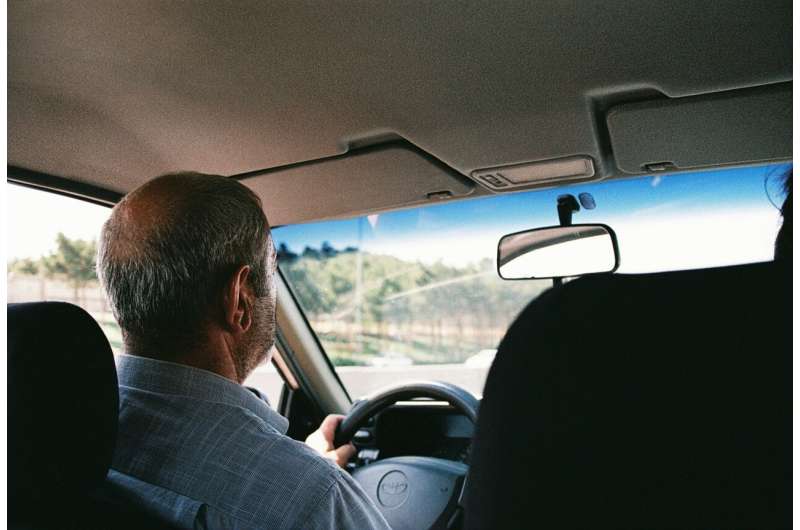This article has been reviewed according to Science X's editorial process and policies. Editors have highlighted the following attributes while ensuring the content's credibility:
fact-checked
trusted source
proofread
Why spatial orientation tests could improve safety assessments for older drivers

Older drivers experience greater difficulties behind the wheel if they have worse spatial orientation ability, according to new research from the University of Exeter.
Their article, "The impact of spatial orientation changes on driving behaviour in healthy ageing" is published in the Journal of Gerontology: Psychological Sciences.
Spatial orientation ability is a combination of skills that enable us to mentally determine our position, or the position of our vehicle and other vehicles, relative to the environment. This new research, led by the University of East Anglia, has found older drivers with worse spatial orientation ability have difficulty making turns across oncoming traffic.
Research psychologist Stephen Jeffs, of the University of Exeter, said, "Maintaining independence is important to all of us, and being able to travel safely from A to B is fundamental to an independent life. But we know older people are at increased risk of being involved in collisions while driving.
"Previous research has focused on how physical changes, such as slowed reaction time or reduced visual acuity, have a negative effect on driving ability as we age. But we also need to understand what part our cognitive health plays—which is why this research is so important.
"For the first time we've shown that worse spatial orientation performance predicts increased reports of driving difficulty and avoidance of challenging situations. Most importantly, spatial orientation predicted difficulty when turning across oncoming traffic, which has clear implications for road safety.
"Therefore, spatial orientation may provide an early indicator of driving fitness, and so could be incorporated into driving safety assessments to help maintain the safety of our roads."
A total of 804 older adults were recruited between February 2021 and August 2021 to complete the study, with an average age of just over 71 years old. Participants needed to be 65 or older, hold a current driving license, and be a regular motorist, driving at least once per week. Those recruited then completed online questionnaires related to their demographic information, health status, driving history, driving habits, road traffic incident history, spatial memory, and navigation ability.
Following this, participants completed a set of neuropsychological tests that assessed for cognitive performance across a variety of areas. The results showed that driving behavior difficulty and avoiding difficult situations is associated with worse spatial orientation ability within healthy aging. The study also replicated previous findings that processing speed is a key area affecting driving behavior in aging.
Spatial orientation has clear relevance to driving behavior, as deficits will lead to increased difficulty in judging the position of the vehicle in relation to the surrounding environment. Furthermore, spatial orientation was the only cognitive domain demonstrating a significant effect on driving behavior across the older age spectrum.
Older adults are overrepresented particularly in intersection crashes that involve multiple vehicles, and therefore orientation deficits are a key individual risk factor for road collisions involving turns across oncoming traffic.
The researchers note some limitations to the study. First, driving behaviors were self-reported by participants, and therefore may be subject to inaccuracy and/or bias. Second, they were unable to investigate the environment in which participants typically drive, for example comparing rural and urban areas, and how these could have a significant impact on mobility requirements, type of driving, and cognitive functioning.
Future research may look to employ naturalistic driving measurements, such as via GPS location devices, to provide objective measures of driving behavior and performance. Further investigation should also be conducted into how driving behavior changes relates to trajectories in cognitive functioning over time, which will provide key information as to how often fitness to drive assessments should be implemented and how both driving behavior and cognitive assessments can be monitored.
More information: Sol Morrissey et al, The Impact of Spatial Orientation Changes on Driving Behavior in Healthy Aging, The Journals of Gerontology, Series B: Psychological Sciences and Social Sciences (2023). DOI: 10.1093/geronb/gbad188




















